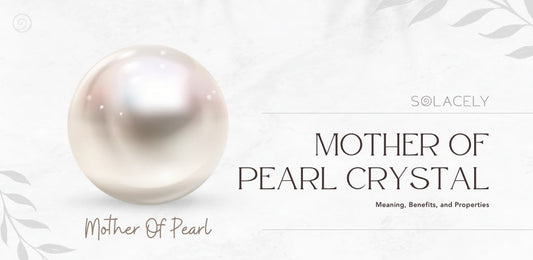Understanding Singing Bowl Frequencies
When embarking on a sound therapy journey with singing bowls, it's essential to comprehend the concept of singing bowl frequencies. The frequencies produced by these instruments are critical to their therapeutic effects, especially in practices like singing bowl chakra alignment or singing bowl chakra clearing.
Factors Influencing Singing Bowl Frequency
Various factors influence the frequency of a singing bowl. These include its diameter, density, shape, material, and thickness. For instance, the larger the singing bowl's diameter, the deeper the pitch. Conversely, the thicker the bowl, the higher the pitch. Understanding these characteristics can help you choose the suitable singing bowl for your needs.
Singing Bowl Types and Their Frequencies
Singing bowls can produce frequencies between 110 Hz and 660 Hz but can reach the 800s or even 900s. The type of singing bowl can also affect the frequency it produces. For instance, crystal singing bowls produce more precise, smoother, and steadier frequencies than metal.
Moreover, singing bowls can be tuned to specific notes, and seven notes belong to the C major scale that singing bowl practitioners work with C, D, E, F, G, A, and B. This is particularly relevant when using singing bowls for balancing chakras, as each chakra is believed to correspond with a specific note.
| Note | Frequency (Hz) |
| C | 256 |
| D | 288 |
| E | 324 |
| F | 341.3 |
| G | 384 |
| A | 432 |
| B | 486 |
By understanding the frequency of singing bowls and how it is influenced, you can create a more effective singing bowl meditation or sound therapy session. In the following sections, we will dive deeper into how these frequencies interact with the body's energy centers or chakras and how to use them for healing and balance.
Singing Bowls and Chakras
One of the most fascinating aspects of singing bowls is their connection with the body's chakras. By understanding the seven major chakras and how their frequencies correspond to specific notes, one can utilize singing bowls for healing and balance.
The Seven Major Chakras
The human body has seven major chakras, each associated with different aspects of our physical and emotional well-being. From the root chakra, associated with our basic survival instincts, to the crown chakra, which connects us with our higher consciousness, each chakra plays a crucial role in our overall energy system. Imbalances in these energy centers can lead to physical, mental, or emotional discomfort. This is where singing bowls can have a powerful positive impact, treating and realigning the chakras to restore balance within the body.
Chakra Frequencies and Corresponding Notes
Singing bowls can produce a range of frequencies that correspond to different chakras. These frequencies range anywhere between 110 Hz and 660 Hz but can reach up to the 800s or even 900s. Lower tones are believed to work for lower chakras, while higher tones work for higher chakras.
For example, the root chakra resonates with a frequency of 194 Hz, the sacral chakra with 210 Hz, and the heart chakra with 136.1 Hz.
| Chakra | Frequency (Hz) |
| Root Chakra | 194 |
| Sacral Chakra | 210 |
| Heart Chakra | 136.1 |
Regarding musical notes, singing bowls can produce different note frequencies, such as C#, D#, F#, G#, and A#, each used for various purposes, including meditation, relaxation, and healing.
Using a singing bowl frequencies chart can effectively match the suitable singing bowl to the chakra you wish to treat, providing a targeted approach to chakra healing and balancing. Whether you're interested in chakra alignment, clearing, or balancing, a singing bowl can be a powerful tool to harmonize your energy system.
How Singing Bowls Affect the Body
Singing bowls hold a special place in sound therapy and meditation due to their unique resonant frequencies. The vibrations produced by these bowls create a soothing auditory experience and can have profound effects on the body and mind.
Physical and Mental Effects
Singing bowl sound meditation significantly reduces tension, anger, fatigue, and depressed mood in participants compared to pre-meditation conditions, according to a study published in the Journal of Evidence-Based Integrative Medicine. Interestingly, participants who were previously inexperienced in this type of meditation experienced a significantly more significant reduction in tension compared to experienced participants.
In addition to alleviating negative emotional states, singing bowl meditation also contributes to an increase in feelings of spiritual well-being in all participants. This suggests that singing bowls can facilitate a deeper connection with one's inner self, promoting peace and harmony.
| Effects of Singing Bowl Meditation | Change |
| Tension | Decrease |
| Anger | Decrease |
| Fatigue | Decrease |
| Depressed Mood | Decrease |
| Spiritual Well-being | Increase |
Singing Bowls in Meditation and Healing
The resonant frequencies produced by singing bowls have been used in various healing practices, including singing bowl sound therapy and singing bowl chakra alignment. These therapies use the unique vibrations of singing bowls to induce deep relaxation and stimulate the body's natural healing processes.
In the context of chakra healing, each singing bowl is tuned to a specific frequency that corresponds to a particular chakra. By playing the appropriate bowl, one can stimulate the corresponding chakra, helping to restore its balance and promote overall well-being. To learn more about this, visit our page on chakra healing with singing bowls.
Furthermore, singing bowls are often used in meditation to enhance focus and relaxation. The soothing sounds and vibrations produced by the bowls can help quiet the mind, making it easier to enter a meditative state. For more information on this, check out our page on singing bowl meditation.
The effects of singing bowls on the body and mind testify to the power of sound and vibration. Whether used for meditation or healing, these unique instruments can profoundly impact our physical and mental well-being.
Using Singing Bowls for Chakra Balancing
Singing bowls profoundly impact chakra alignment and can aid in restoring balance within the body. This section explores how to harmonize your chakras by matching singing bowls to each chakra and discusses some techniques used in chakra balancing.
Matching Bowls to Chakras
The seven primary chakras, located along the center channel of the body, commonly thought of as the spine, each resonate with a specific musical note, color, element, symbol, and gemstone. Various singing bowls, including crystal, can effectively heal chakra. The table below breaks down the corresponding notes for each chakra:
| Chakra | Note |
| Root Chakra | C |
| Sacral Chakra | D |
| Solar Plexus Chakra | E |
| Heart Chakra | F |
| Throat Chakra | G |
| Third Eye Chakra | A |
| Crown Chakra | B |
Typically, lower tones are believed to work for lower chakras (Root, Sacral, Solar Plexus), while higher tones are effective for higher chakras (Heart, Throat, Third Eye, Crown). This information is beneficial when selecting a singing bowl for balancing chakras.
Techniques for Chakra Balancing
When it comes to chakra balancing using singing bowls, there are several techniques one can employ. A common practice is to place the bowl near the chakra you intend to balance and gently strike or circle the bowl's rim with a mallet. This produces a resonance that aligns with the chakra's frequency, helping to restore balance and harmony.
During a singing bowl chakra meditation, one might play the bowls associated with each chakra in sequence, starting from the Root Chakra and moving up to the Crown Chakra. This process is known as a "chakra sweep," it helps remove energy blockages and restore the natural flow of energy in your body.
However, each individual is unique, and what works well for one person may work better for another. Therefore, it's essential to experiment with different techniques and see what works best for you. You can also seek out a practitioner experienced in chakra healing with singing bowls for guidance and personalized advice.
Remember, the ultimate goal when using singing bowls for chakra balancing is to restore harmony within your body and mind, enhancing your overall well-being. Whether you're engaging in singing bowl meditation, singing bowl sound therapy, or singing bowl chakra clearing, the key is to approach the practice with an open mind and a receptive spirit.
Choosing the Right Singing Bowl
Finding the suitable singing bowl involves a balance of understanding its potential frequencies and how those frequencies align with your specific needs and goals.
Factors to Consider
The frequency of a singing bowl is influenced by several factors, including its diameter, density, shape, material, and thickness. For example, the larger the singing bowl's diameter, the deeper the pitch. Conversely, the thicker the bowl, the higher the pitch.
Singing bowls can produce different overtones, including the fundamental tone, the female overtone, and a mid-tone. These tones create a rich and complex sound that can deeply resonate with listeners. Singing bowls can also produce different harmonies or chords - combinations of notes sounded together. The harmonies are determined by the specific chord produced by the singing bowl.
Moreover, singing bowls can play different octaves, and the octave heard generally depends on the size of the bowl or its composition (such as metal versus crystal). The third octave is generally the lowest, the fourth octave is in the middle, and the fifth octave is generally the highest octave of notes found in singing bowls.
Understanding Singing Bowl Charts
A singing bowl frequencies chart can be a helpful tool in understanding the association between the notes a singing bowl can produce and the chakras they are believed to influence.
Typically, seven notes belong to the C major scale that most singing bowl practitioners work with: C, D, E, F, G, A, and B. Each note corresponds to a specific chakra, from the root to the crown. Therefore, when choosing a singing bowl, it's essential to consider which chakras you intend to work on and select a bowl that produces the corresponding note.
In conclusion, choosing the suitable singing bowl involves understanding the different factors influencing its frequency and how those frequencies align with your needs. Considering these factors and using a singing bowl frequencies chart can significantly assist in making the right choice for your singing bowl meditation or singing bowl chakra balancing practice.
Exploring the Science Behind Singing Bowls
The use of singing bowls for meditation and healing purposes is based on ancient traditions and has a scientific basis. This section will delve into the research highlighting the impact of singing bowls and their future research directions.
Research on Singing Bowls' Impact
Scientific studies lend credibility to the benefits of singing bowl meditations. A study found that singing bowl sound meditation significantly reduces tension, anger, fatigue, and depressed mood in participants compared to pre-meditation conditions (all Ps < .001). This study also revealed that participants previously inexperienced in this type of meditation experienced a significantly more significant tension reduction than experienced participants (P < .001).
Further, the study showed that singing bowl meditation significantly increases feelings of spiritual well-being in all participants (P < .001). As such, it was suggested that singing bowl meditation may be a feasible, low-cost, and low-technology intervention for reducing feelings of tension, anxiety, and depression and increasing spiritual well-being.
Moreover, singing bowls, gongs, and bells in sound meditation can induce a deep relaxation response and positively affect mood and sense of well-being. This emphasizes the potential of singing bowl sound therapy as a beneficial practice for mental and emotional wellness.
Future Research Directions
While the existing research provides promising evidence of the benefits of singing bowl frequencies for chakra balancing, there is a need for more comprehensive studies. Future research could explore the specific impacts of different singing bowl frequencies on the individual chakras. This could aid in creating a more accurate 'singing bowl frequencies chart' that can guide users in their chakra healing with singing bowls' journey.
Additional research could also investigate the long-term effects of consistently using singing bowls for chakra balancing and how it may influence various aspects of a person's life - from emotional balance to physical health.
By continuing to explore the science behind singing bowls, we can deepen our understanding and maximize the benefits of this ancient practice. Whether it's singing bowl meditation, chakra alignment, or chakra clearing, the potential benefits of this practice are expansive and worth exploring.













